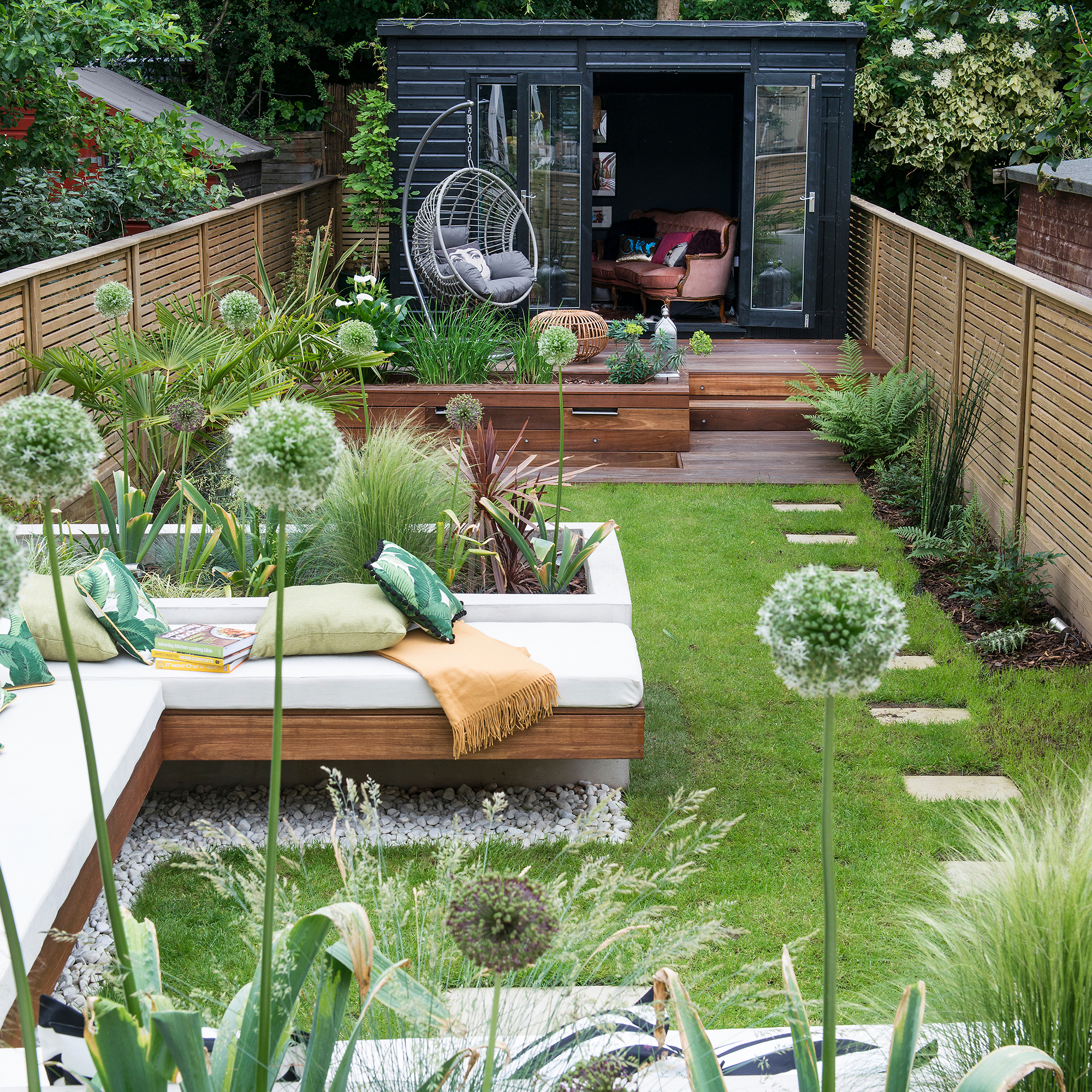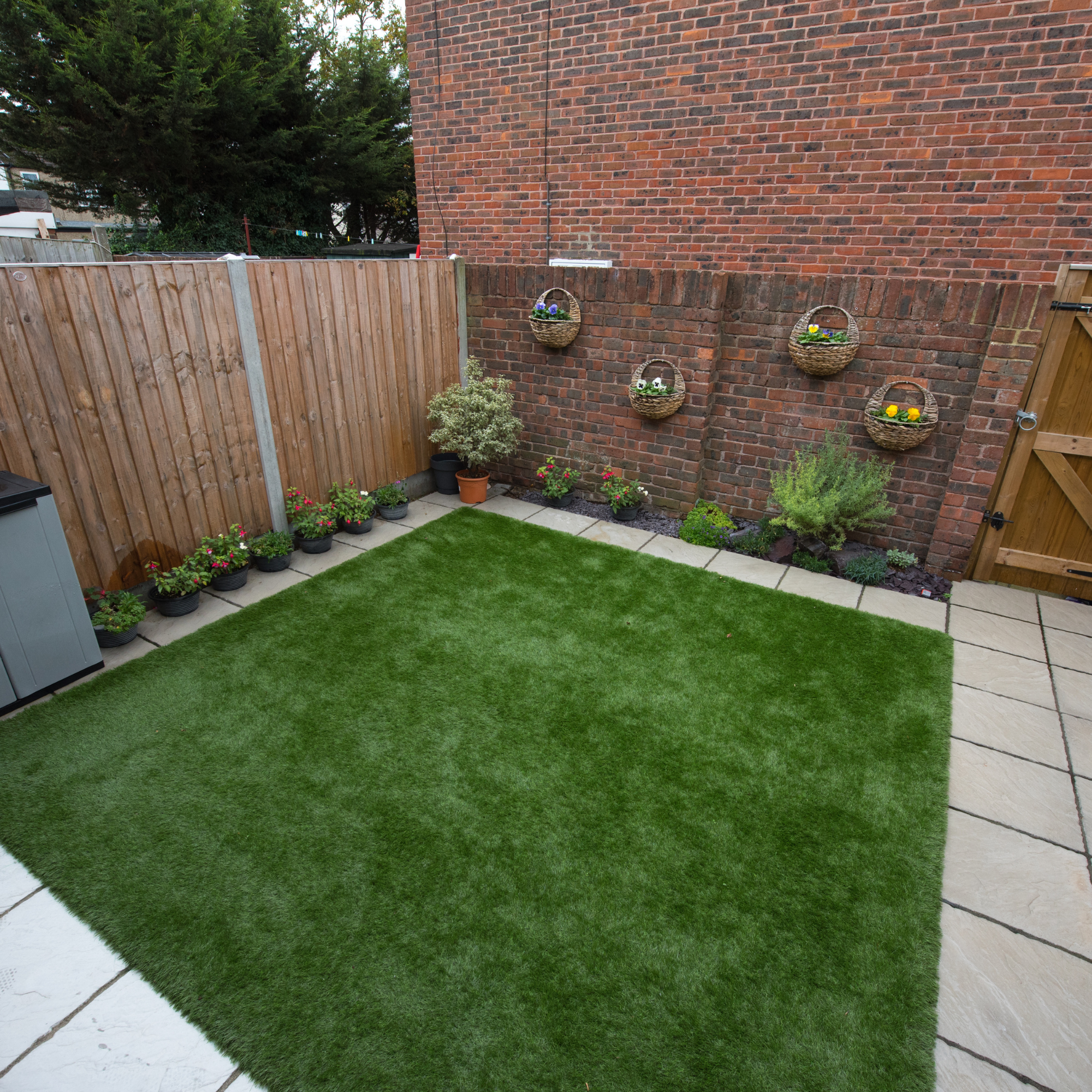
Artificial grass is a popular choice amongst households and rental properties due to its low maintenance. It may take a little hassle out of gardening but that doesn't mean artificial grass requires no maintenance at all - this is the one thing you need to do to maintain your artificial grass this winter.
A natural lawn is always the best option for wildlife-friendly lawn ideas. But if you have decided to go down the low-maintenance artificial lawn route you do still need to give it a little care, especially in winter.
The most important thing you can do over winter is keep on top of wet leaves and fallen debris.

Why do I need to clear debris?
'One mistake I’ve seen people make is thinking artificial grass is maintenance-free. While it’s definitely low-maintenance compared to natural grass—no mowing, no fertilising—it still needs some attention, especially before cold weather hits,’ says Jenny He landscaping expert, and the Co-Founder & CEO of Ergeon.
‘Prepping artificial grass for winter is crucial if you want it to stay in good shape, last longer, and look great come spring.
‘Any debris like leaves, twigs, or dirt can get trapped and freeze when the temperature drops, which can damage the turf.
‘It can also encourage mould or moss growth, especially in areas that don’t get a lot of sunlight during winter.
‘So, taking the time to clear everything off the grass is essential. I usually recommend using a leaf blower or a stiff-bristle broom to get everything off quickly and easily. It’s a simple step that prevents bigger problems down the line.’
Like it or not, falling leaves and debris are part of the winter months and not something you can avoid. Regularly brushing your artificial grass - at least once a week - removes fallen debris preventing your turf from becoming damaged or damp and mouldy.
‘A light hose down with water will help remove dust and smaller particles,’ Martin Beaumont, founding director Monty Miracle then comments.
Martin also recommends using a leaf blower first to remove the large bits of debris before using a stiff broom to remove any extra bits.

What else can I do?
‘Another thing to keep in mind is brushing the grass to keep the fibres upright,’ says Jenny.
‘After a season of use, the fibres can get flattened, and if they stay that way through winter, they might not bounce back as easily. Using a power brush or a stiff broom can help lift the fibres and keep the grass looking its best.’
Jenny also recommends making sure your artificial grass drains correctly.
‘Artificial grass is designed to drain water, but if the drainage is blocked or not functioning correctly, you could end up with standing water that turns into ice. This can put extra stress on the grass fibres and the base beneath it,’ she says.
‘In short, clean it thoroughly, check your drainage, and give the grass a good brushing. These steps will make sure your artificial grass is ready for whatever winter throws at it.’
Martin also warns of certain activities that can ruin artificial grass.
‘To ensure the ongoing care of your grass between cleans, avoid heat sources - keep fireworks, firepits and smoking devices away, as they could melt or fuse your grass fibres,’ he says.
‘Prevent punctures and tears by avoiding using sharp objects - no gazebo hooks or inserted standing lights. Never park vehicles on the turf and be mindful of sprinkler water which can leave mineral deposits.’
So, grab a broom and get sweeping if you want your artificial grass to remain top shape for next year.







